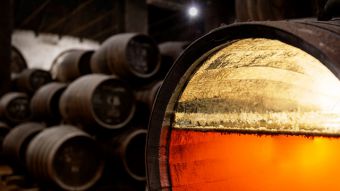Rioja Alta: four oaks and a river.
In 1892, exactly two years after the founding of the Rioja Alta winery, the image of four oak trees by the River Oja was adopted by this great Riojan winery, which celebrates its 125 year anniversary this year. The heirs of the five founding families have successfully turned the bodega into one of the most important wine companies in Spain, and transformed that simple 19th-century design into an iconic symbol of the classicism and elegance of fine wine from Rioja.
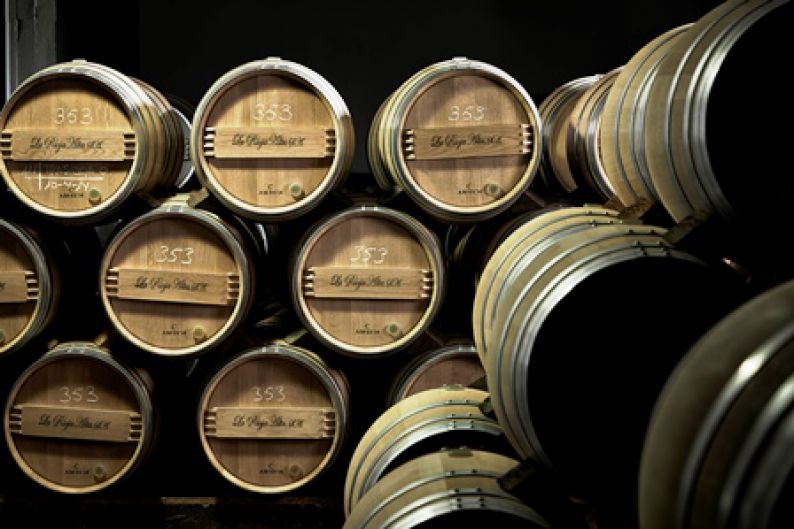
I could not find out for certain the name of the 19th century “creative”, who came up with the idea of using the image of four oak trees by a river to identify the wines of a fledgling winery in Haro (but I am pretty certain that he/she was not referred to as a “creative” at the time!). You may not have noticed this image which appears on all of this iconic wine company’s labels. It represents strength (the oak tree) and constancy (the flow of the river).
The river's name, “Rio Oja”, appears in the image, and it is nice to think that they chose this humble watercourse, from which the Spanish wine region inherited its name forevermore, rather than the larger, prouder River Ebro, a prominent feature of the region. But it doesn’t really matter, both these rivers flow through Haro, the town where the Rioja Alta winery, also destined to endure for generations to come, was born 125 years ago.
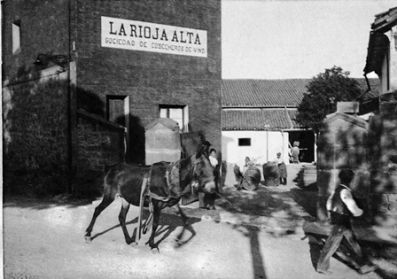 The year was 1890 and this Riojan town, along with Jerez de la Frontera, could lay claim to being one of only two towns in Spain whose streets were illuminated by electric lighting. “Ya se ven las luces, ya estamos en Haro…” (“Now we can see the lights, now we are in Haro”). Neither Madrid nor Barcelona, nor even Bilbao, could boast this luxury on their city streets. The lighting system was primitive and cumbersome and a curious example of it can be viewed in the bodega’s museum. Its inauguration was a major event in 1890 which, as chance would have it, was also the year in which this wine company saw “the light of day”, but under another name. It was officially created, in Don Vicente Garcia’s notary, on 10 July, as the Sociedad Vinícola de la Rioja Alta.
The year was 1890 and this Riojan town, along with Jerez de la Frontera, could lay claim to being one of only two towns in Spain whose streets were illuminated by electric lighting. “Ya se ven las luces, ya estamos en Haro…” (“Now we can see the lights, now we are in Haro”). Neither Madrid nor Barcelona, nor even Bilbao, could boast this luxury on their city streets. The lighting system was primitive and cumbersome and a curious example of it can be viewed in the bodega’s museum. Its inauguration was a major event in 1890 which, as chance would have it, was also the year in which this wine company saw “the light of day”, but under another name. It was officially created, in Don Vicente Garcia’s notary, on 10 July, as the Sociedad Vinícola de la Rioja Alta.
In those days, the wine from Rioja and the iron ore from Vizcaya were the pillars of much of Spain’s economy. Phylloxera had not yet blighted the vineyards as it had in France, and as a result, the region’s wine growers had been able to grow rich from the many French wine merchants who came to Rioja to source their grapes. Some of these merchants settled in the area, establishing their own wineries.
The similarity in the quality of the wines of Rioja and those of Bordeaux, which enjoyed far greater fame, had long been noted. In his magnificent writings, the great Spanish historian, Manuel Llano Gorostiza, relates that the British Wine Trade Review, reported on the French buying up large supplies of wine in the province of Logroño in 1883, these wines shamelessly multiplying their price once they reached the Bordeaux market having undergone an aristocratic French baptism! 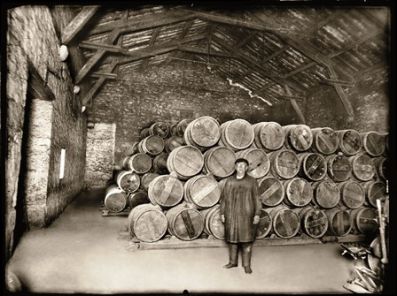
Madam President
This favourable environment for wines of Rioja was not lost on the five partners who decided to join forces to create the company in a Haro notary office on that day in July 1890. The original five went by the names of Saturnina Cid y Garate (yes, a woman), Felipe Puig de la Bellacasa, Alfredo Ardanza, Dionisio del Prado and Mariano Lacort. Interestingly, and in a surprising show of modernity, they appointed Señora Cid as president of the newly founded “Sociedad Vinícola de la Rioja Alta”. The capital recorded in the company’s constitution was 112,500 pesetas, of which only 20% was disbursed. Mariano Lacort was appointed general manager, a position he held until 1922.
One of the five partners, Alfredo Ardanza, already had a winery in his own name, and another, Felipe Puig de la Bellacasa, owned land and facilities that were rented to the new company. These were situated in a district of Haro which, back then, was just starting to become busy because of its location next to the train station, from where the grapes departed for France. This district is the famous Barrio de la Estación, which boasts more wineries per square metre than anywhere else in the world.
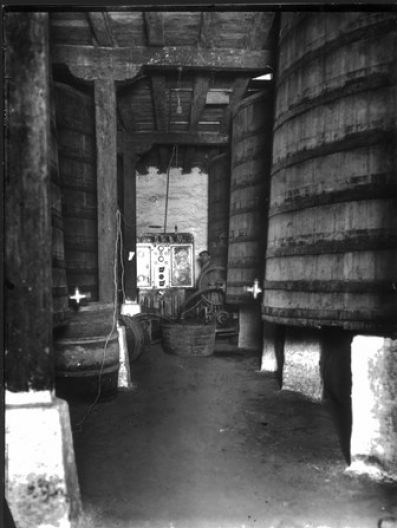 After only a year, the company changed its name to its current name of Rioja Alta. So, although Rioja Alta is the name of one of the three areas of Rioja, it is also the official name of this great company. From the day it was founded, and perhaps not surprisingly, given the circumstances of the time, its technical management was entrusted to a French oenologist, Monsieur Albert Vignier. He performed a sterling job at the company and was important to its success. The first wine released by the fledgling wine company was baptized Reserve 1890, which later became the magnificent Gran Reserva 890. The year had to be dropped from the name because, when the vintage was not required on the label, it was thought that it might confuse the drinker into thinking that the wine in the bottle was actually from the 1890 vintage!
After only a year, the company changed its name to its current name of Rioja Alta. So, although Rioja Alta is the name of one of the three areas of Rioja, it is also the official name of this great company. From the day it was founded, and perhaps not surprisingly, given the circumstances of the time, its technical management was entrusted to a French oenologist, Monsieur Albert Vignier. He performed a sterling job at the company and was important to its success. The first wine released by the fledgling wine company was baptized Reserve 1890, which later became the magnificent Gran Reserva 890. The year had to be dropped from the name because, when the vintage was not required on the label, it was thought that it might confuse the drinker into thinking that the wine in the bottle was actually from the 1890 vintage!
Fourteen years later, the partner who owned Bodega Ardanza decided to merge his company with Rioja Alta, increasing it in size. In commemoration of that year, another great wine was brought out. It was named Reserve 1904 at the time but, for the reasons given above, it dropped its first digit to become Gran Reserva 904. Another Rioja Alta icon.
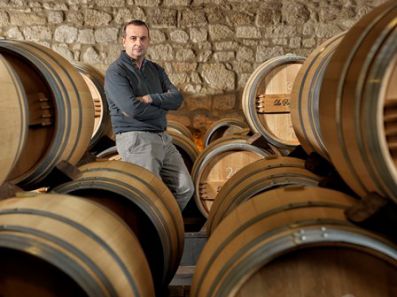 FROM BOCOY TO BOTTLE
FROM BOCOY TO BOTTLE
Rioja Alta’s wines picked up medals at the numerous universal exhibitions so popular in the early 20th century. They were also exported to various European and South American countries, particularly Cuba and Venezuela, in wooden barrels. For the Spanish market, the wine was transported by train in bocoyes (large casks) and was then bottled and labelled at its destination by the company’s employees, who were constantly having to travel around Spain as a result. By the early 1930’s, however, they were selling the wines bottled at the winery and wrapped in a straw jacket. A few years later, the company officially registered the name of a new wine, the famous Viña Ardanza, in honour of the partner of the same name. The company continued to grow and went on to bring out two more brands that complete the splendid Rioja Alta line-up today – Viña Alberdi and Viña Arana.
Each has its own special character, instantly recognizable on the nose, yet always in a classic Rioja style. All are admired and sought out, yet impossible to imitate. This is the great “Rioja Alta character”. Unmistakable!



